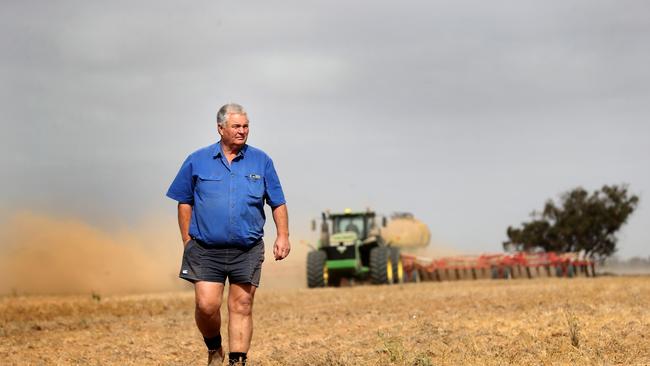Crop yields to fall with big dry on horizon
Crop yields in Victoria are in for a big drop this season, but growers aren’t concerned. See the latest forecasts.

Crop yields in Victoria are expected to fall by 35 per cent this season, with forecast heavy rain this week potentially the last decent drink for plants before a dry winter and spring.
According to the first seasonal outlook by the Australian Bureau of Agricultural and Resource Economics and Sciences, the volume of grain harvested in the state will drop by more than a third to 7 million tonnes, despite growers planting a similar sized area to last year.
Victorian Farmers Federation grains council president and Berriwillock grower Craig Henderson said he wasn’t too concerned about the outlook after a “terrific start” to the season.
“A one-third drop (compared to last season) should put us close around average,” he said.
“We’re not expecting a bumper year, but we should be able to wash our faces all right.”
On his Berriwillock property, Mr Henderson received 6-20mm of rain this week. If forecast falls of up to 40mm eventuated, plants would be set up for the winter, he said.
The Bureau of Meteorology has forecast widespread rain of between 25-50mm has been for large swathes of south eastern Australia this week.
If it comes, it would be perfect timing for crop growers after much of Victoria’s Mallee and Wimmera regions received below average rainfall in May.
But it could be the last decent rainfall event for a while, with BOM forecasting a likely El Nino event this year, as well as a positive Indian Ocean Dipole. Both events are expected to bring below-average rainfall.
Farmers have planned for the dry end to the season, with the area planted to moisture-loving canola in Victoria expected to fall 8 per cent this year, according to the ABARES forecast. The canola area has been replaced by cereal crops, which are more tolerant of dry conditions.
In NSW, total crop production was expected to fall 28 per cent to 10.8 million tonnes. Area planted to both canola and wheat was expected to fall, while barley area was expected to grow by 8 per cent.
Across the country, total winter crop production was expected to fall 34 per cent to 44.9 million tonnes, from a total 23.3 million planted hectares.
The planted estimate was slightly below agricultural banking specialist Rabobank’s estimate, released last week, which came in at 23.5 million hectares.
ABARES executive director Dr Jared Greenville said farmers would be well equipped for the downturn after three years of high prices, good seasons and record farm cash incomes.
APW wheat, delivered to Melbourne, was trading for $412 a tonne last week. Barley1 was trading for $355/tonne and non-genetically modified canola was trading for $650/tonne — a fall from last year’s record highs but above long-term averages.





